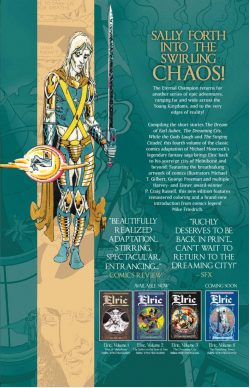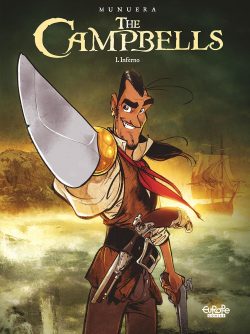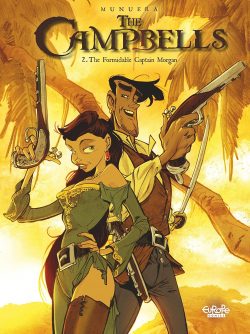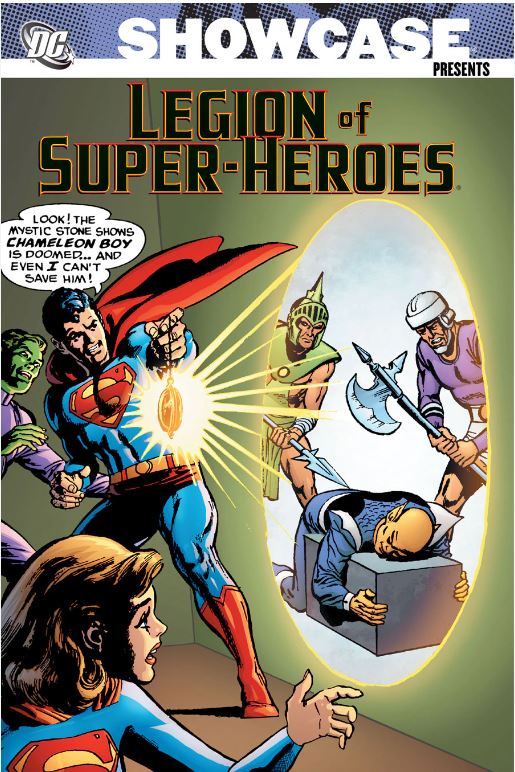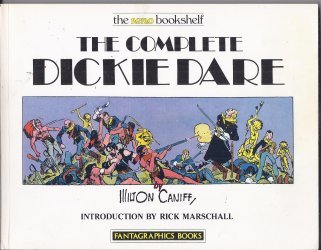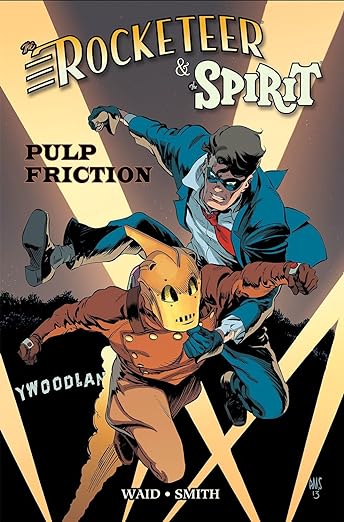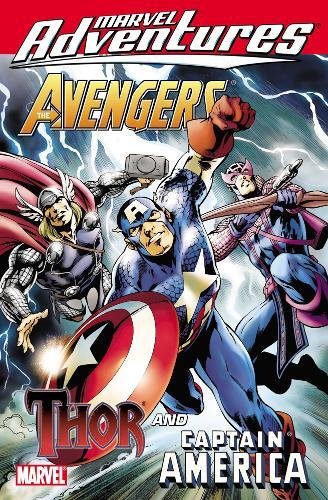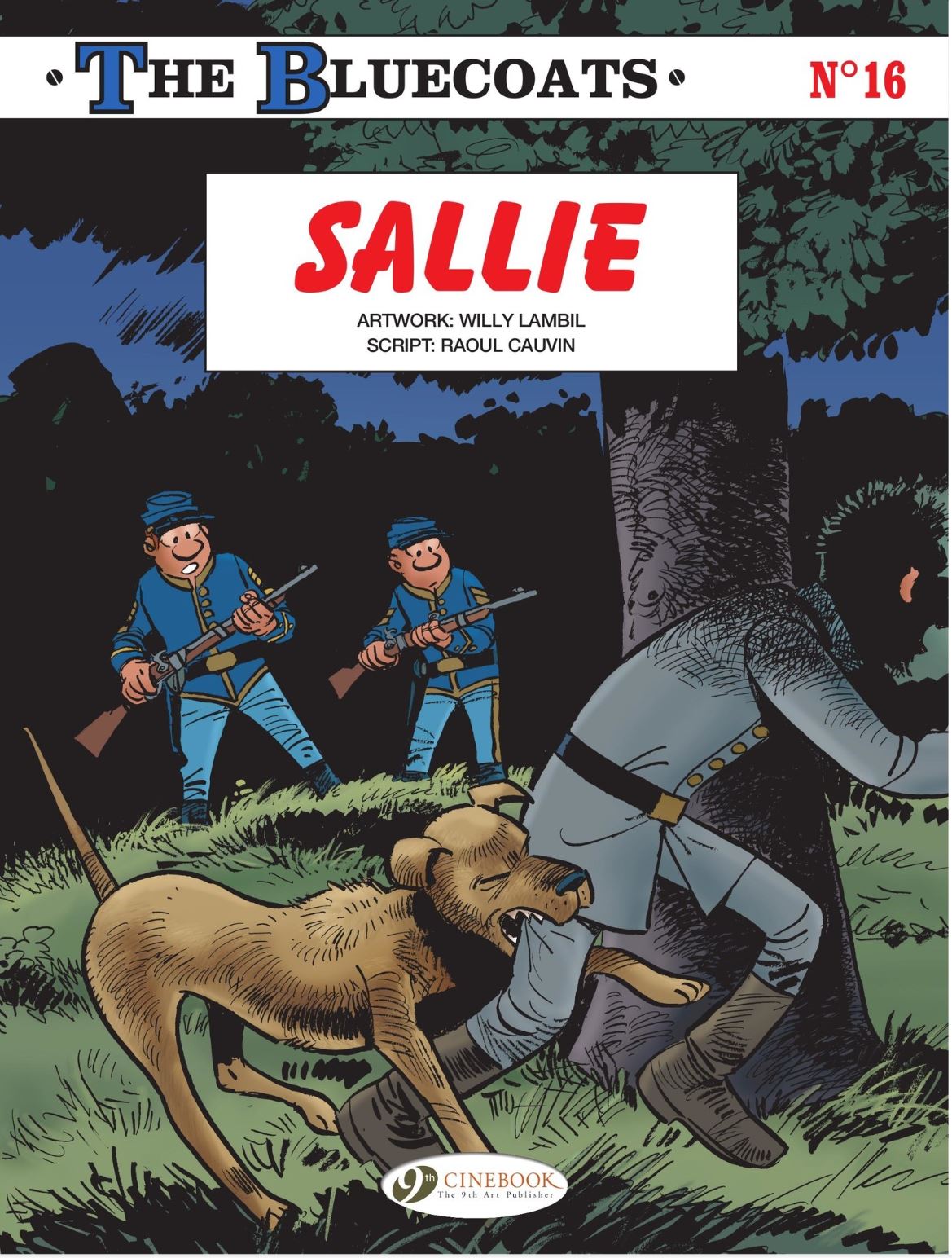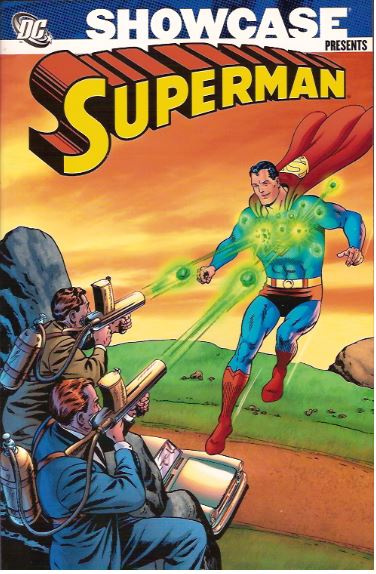
By Otto Binder, Jerry Siegel, Robert Bernstein, Bill Finger, Jerry Coleman, Edmond Hamilton, Leo Dorfman, Jack Schiff, Wayne Boring, Al Plastino, Curt Swan, Kurt Schaffenberger, Jim Mooney, George Papp, Sheldon Moldoff & various (DC Comics)
ISBN: 978-1-4012-1271-1 (TPB)
Superman has proven to be all things to all fans over his decades of existence, and with the character currently undergoing another radical overhaul, these timeless tales of charm, joy and wholesome wit are more necessary than ever: not just as a reminder of great tales of the past but as an all-ages primer of the wonders still to come…
At the time these tales were published The Metropolis Marvel was enjoying revived interest. Television cartoons, a rampant merchandising wave thanks to the Batman-led boom in “camp” Superheroes generally, highly efficient global licensing and even a Broadway musical: all worked to keep the Last Son of Krypton a vibrant icon of Space-Age America.
Although we think of Jerry Siegel & Joe Shuster’s iconic invention as the epitome of comic book creation, in truth soon after his launch in Action Comics #1 he became a multimedia star and far more people have enjoyed the Man of Steel than have ever read him. By the time his 20th anniversary rolled around, Superman was a regular on radio, astounding animated cartoons, two movie chapter-plays and a feature film, and had just ended his first smash-hit live-action television serial. In his future were many more; a stage musical; a franchise of cinematic blockbusters and a seamless succession of TV cartoons, starting with The New Adventures of Superman in 1966. Even Krypto got in on the small-screen act…
It’s no wonder then that tales from this Silver Age period should be so draped in wholesome trappings of “Tinseltown” – even more so than most of celebrity-obsessed America. It didn’t hurt that editor Whitney Ellsworth was a part-time screenwriter, script editor and producer as well as National/DC’s Hollywood point man. His publishing assistant Mort Weisinger – a key factor in the vast expansion of the Kryptonian mythos – also had strong ties to the cinema and television industries, beginning in 1955 when he became story-editor for the blockbusting Adventures of Superman TV show.
This third magnificent monochrome chronicle collects the contents of Action Comics #276-292, Superman #146-156 and excerpts from Superman Annuals #3-5, spanning May 1961 to October 1962; taking its content from the early 1960’s canon (when the book’s target audience would have been actual little kids) yet showcasing a rather more sophisticated set of tales than you might expect…
Wide-eyed wonderment commences with Action Comics #276’s ‘The War Between Supergirl and the Superman Emergency Squad’ by Robert Bernstein, Wayne Boring & Stan Kaye. Here, Superman is conned into revealing his secret identity and resorts to incredible measures to make a swindler disbelieve his eyes, after which #277 presented ‘The Conquest of Superman!’ (Bill Finger, Curt Swan & John Forte): another brilliantly brutal duel against super-scientist Lex Luthor.
Superman #146 (July 1961) offered ‘The Story of Superman’s Life’ relating more secrets by recapitulating Clark Kent’s early days in a captivating resumé. Covering all the basics, Otto Binder & Al Plastino share the death of Krypton, rocket-ride to Earth, early life as Superboy, death of the Kents and moving to Metropolis. Closing, ‘Superman’s Greatest Feats’ (Jerry Siegel & Plastino) sees the Man of Tomorrow travel into Earth’s past and seemingly succeed in preventing such tragedies as the sinking of Atlantis, slaughter of Christians in Imperial Rome, deaths of Nathan Hale, Abraham Lincoln and Custer and even the death of Krypton’s population. Of course it is too good to be true…
Action #278 featured ‘The Super Powers of Perry White!’ (Jerry Coleman, Swan & Kaye) with the senescent editor suddenly gaining superpowers and an inexplicable urge to conquer the world. In Superman #147 ‘The Great Mento!’ – Bernstein & Plastino – a mystery mind-reader threatens to expose the hero’s secret identity. ‘Krypto Battles Titano’ (Siegel & Plastino) finds the wandering Dog of Steel voyaging back to the Age of Dinosaurs to play before inadvertently saving humanity from alien invasion alongside the Kryptonite-mutated giant ape. The issue closed with ‘The Legion of Super Villains’ (Siegel, Swan & Sheldon Moldoff): a landmark adventure and stand-out thriller featuring Lex Luthor and the adult Legion of Super-Heroes overcoming certain death with valour and ingenuity.
This was followed by Swan’s iconic cover for Superman Annual #3 (August 1961); the uncredited picture-feature Secrets of the Fortress of Solitude and a superb back-cover pin-up.
The author of Action #279’s Imaginary Story ‘The Super Rivals’ is regrettably unknown but John Forte’s sleekly comfortable art happily limns the wild occurrence of legendary heroes Samson and Hercules brought to the 20th century by Superman to marry Lois Lane and Lana Lang, to keep them out of his hair! In #280 ‘Brainiac’s Super Revenge’ (Siegel, Swan & Kaye) returns that time-lost villain to our era and attacking the Man of Steel’s friends, only to be foiled by guest-star Congorilla (veteran Action Comics hero Congo Bill, who traded consciousness with a giant Golden Gorilla). Imaginary Stories were conceived as a way of exploring non-continuity plots and scenarios devised at a time when editors believed that entertainment trumped consistency and knew that every comic read was somebody’s first…
When Editor Weisinger was expanding Superman continuity and building a legend, he knew each new tale was an event adding to a nigh-sacred canon: that what was written and drawn mattered to readers. However, the ideas man wasn’t going to let aggregated “history” stifle a good plot situation, nor would he allow his eager yet sophisticated audience to endure clichéd deus ex machina cop-outs to mar the sheer enjoyment of captivating concepts. The mantra known to every fan was “Not a Dream! Not a Hoax! Not a Robot!”: emblazoned on covers depicting scenes that couldn’t possibly be true – even if it was only a comic book.
Superman #148 opened with Edmond Hamilton, Swan & Moldoff’s ‘The 20th Century Achilles’, wherein a cunning crook makes himself immune to harm, after which ‘Mr. Mxyzptlk’s Super Mischief’ (Siegel, Swan & Moldoff) again finds the 5th dimensional pest using magic to cause irritation after legally changing his name to something even easier to pronounce, whilst the delightfully devilish ‘Superman Owes a Billion Dollars!’ – written by Bernstein – depicts the Caped Kryptonian’s greatest foe: a Revenue agent who diligently discovers that the hero has never paid a penny of tax in his life…
Action Comics #281 features ‘The Man Who Saved Kal-El’s Life!’ (Bernstein & Plastino), relating how a humble Earth scientist visited Krypton and cured baby Superman, all wrapped up in a gripping duel with a modern crook able to avoid Superman’s every effort to hold him, whilst in Superman #149, ‘Lex Luthor, Hero!’, ‘Luthor’s Super-Bodyguard’ and ‘The Death of Superman’ (Siegel, Swan & Moldoff) form a brilliant extended Imaginary saga describing the insidious inventor’s ultimate victory over the Man of Steel.
In “real” continuity, Action #282 shares ‘Superman’s Toughest Day’ (Finger & Plastino) as Clark Kent’s vacation only reveals how his alter ego never really takes it easy, before #283’s ‘The Red Kryptonite Menace’ (Bernstein, Swan & Kaye) follows Chameleon Men from the 30th century afflicting the Action Ace with incredible new powers and disabilities after exposing him to a variety of Crimson K chunks.
Superman #150 opened with ‘The One Minute of Doom’ – Siegel & Plastino – disclosing how all survivors of Krypton – even Superdog – commemorate the planet’s destruction, before Bernstein & Kurt Schaffenberger’s ‘The Duel over Superman’ finally sees Lois and Lana Lang teach the patronising Man of Tomorrow a deserved lesson about his smug masculine complacency.
Siegel, Swan & Kaye then baffle readers and Action Ace alike ‘When the World Forgot Superman’, in a clever and beguiling mystery yarn, followed here by extracts from Superman Annual #4 (January 1962): the stunning cover and featurette The Origin and Powers of the Legion of Super-Heroes by Swan & George Klein.
Action #284 featured ‘The Babe of Steel’ (Bernstein, Swan & Klein) wherein Superman endures humiliation and frustration after deliberately turning himself into a toddler – but there’s a deadly serious purpose to the temporary transformation…
Superman #151 opens with Siegel & Plastino’s salutary story ‘The Three Tough Teen-Agers!’ wherein the hero sets a trio of delinquents back on the right path, after which Bernstein, Swan & Klein’s ‘The Man Who Trained Supermen’ sees Clark expose a crooked sports trainer. ‘Superman’s Greatest Secret!’ is almost revealed after battling a fire-breathing dragon which survived Krypton’s doom in a stirring tale by Siegel, Swan & Klein: probably one of the best secret-identity-saving stories of the period…
Since landing on Earth, Supergirl’s existence had been a closely guarded secret, allowing her time to master her formidable abilities. These tales were presented to the readership monthly as a back-up feature in Action Comics. However with #285, ‘The World’s Greatest Heroine!’ finally goes public in the Superman lead spot, after which the Girl of Steel defeats ‘The Infinite Monster’ in her own strip. Supergirl became the darling of the universe: openly saving the planet and finally getting credit for it in stirring tales by Siegel & Jim Mooney.
Action #286 offered mini-epic ‘The Jury of Super-Enemies’ (Bernstein, Swan & Klein) as the Superman Revenge Squad inflicts Red K hallucinations on the Man of Steel: tormenting him with visions of Luthor, Brainiac, the Legion of Super-Villains and other evil adversaries. The saga continued in the next issue, but before that Superman #152 appeared, with a surprising battle against ‘The Robot Master’ (Siegel, Swan & Klein), charmingly outrageous romp ‘Superbaby Captures the Pumpkin Gang!’ (Leo Dorfman & George Papp) and ‘The TV Trap for Superman!’, a devious crime caper by Finger & Plastino with the hero unwittingly wired for sound and vision by a sneaky conman…
The Revenge Squad thriller concluded in #287’s ‘Perry White’s Manhunt for Superman!’ (Bernstein, Swan & Klein) as an increasingly deluded Man of Tomorrow battles his worst nightmares and struggles to save Earth from a genuine alien invasion.
Finger & Plastino’s ‘The Day Superman Broke the Law!’ opened Superman #153, as a wily embezzler entangles the Metropolis Marvel in small-town red tape before ‘The Secret of the Superman Stamp’ (Edmond Hamilton, Swan & Klein) sees a proposed honour for good works turned into a serious threat to the hero’s secret identity…
‘The Town of Supermen’ by Siegel & Forte, then finds the Man of Tomorrow in a western ghost town in a deadly showdown against ten Kryptonian criminals freshly escaped from the Phantom Zone…
The growing power of the silver screen informed ‘The Man Who Exposed Superman’ (Action #288 by writer unknown and Swan & Klein) as a vengeful convict originally imprisoned by Superboy attempts to expose the hero’s identity by blackmailing him on live television. ‘The Super-Practical Joker!’ (#289 by Dorfman & Plastino) sees Perry White forced to hire obnoxious trust-fund brat Dexter Willis: a spoiled kid whose obsessive stunts almost expose Superman’s day job.
Opening Superman #154, Hamilton, Swan & Klein’s ‘The Underwater Pranks of Mr. Mxyzptlk’ see the insane sprite return, resolved to cause grief and stay for good by only working his jests whilst submerged, after which ‘Krypton’s First Superman’ (Siegel, Swan & Klein) tells a lost tale of baby Kal-El on there that has unsuspected psychological effects on the full-grown hero. Next comes an example of the many public service announcements running in all DC’s 1960’s titles. ‘Superman Says be a Good Citizen’ was probably written by Jack Schiff and definitely illustrated by Sheldon Moldoff.
Exposure to a Red Kryptonite comet in Action #290 sees him become ‘Half a Superman!’ in another sadly uncredited story illustrated by Swan & Klein, after which Superman Annual #5 (July 1962) offers another stunning cover and displays the planetary Flag of Krypton, whilst Superman #155 featured 2-chapter ‘Superman Under the Green Sun’ and ‘The Blind Superman’ by Finger, Wayne Boring & Kaye, as the Man of Steel is trapped on a totalitarian world where his powers don’t work. Blinded as part of the dictator’s policy to keep the populace helpless, even sightless, nothing stops the hero from leading the people to victory. As if that wasn’t enough Siegel, Swan & Klein then debut showbiz thriller ‘The Downfall of Superman!’ with a famous wrestler seemingly able to defeat the Action Ace – albeit with a little help from some astounding guest-stars…
‘The New Superman!’ (Bernstein & Plastino, Action #291) sees the Metropolis Marvel lose his deadly susceptibility to Kryptonite, only to have it replaced by aversions to far more commonplace minerals, whilst #292 reveals ‘When Superman Defended his Arch Enemy!’ – an anonymous thriller illustrated by Plastino – which has the hero save Luthor from his just deserts after “murdering” alien robots…
The grand excursion into comics nostalgia ends with one of the greatest Superman stories of the decade. Issue #156, October 1962, featured Hamilton, Swan & Klein’s novel-length saga ‘The Last Days of Superman’ which began with ‘Superman’s Death Sentence’ as the hero contracts deadly Kryptonian Virus X and goes into a swift and painful decline. Confined to an isolation booth, he’s visited by ‘The Super-Comrades of All Times!’ who attempt cures and swear to carry on his works… until a last-minute solution is disclosed on ‘Superman’s Last Day of Life!’ This tense and terrifying thriller employed the entire vast and extended supporting cast that had evolved around the most popular comic book character in the world and still enthrals and excites in a way few stories ever have…
As well as containing some of the most delightful episodes of pre angst-drenched, cosmically catastrophic DC, these fun, thrilling, mind-boggling and yes, occasionally deeply moving all-ages stories also perfectly depict the changing mores and tastes which reshaped comics between the safely anodyne 1950s to the seditious, rebellious 1970s, all the while keeping to the prime directive of the industry: “keep them entertained and keep them wanting more”.
I know I certainly do.
© 1961, 1962, 2007 DC Comics. All Rights Reserved.

